Debugging a Hot Wires circuit
Jude was given an electronics set for her birthday, called Hot Wires. You connect components together with poppers to make circuits, and it’s generally very good. One of the experiments is called ‘traffic lights’, and is supposed to be a circuit where you choose whether a green light or a red light shines, by pressing a button. Simplifying slightly, its circuit is
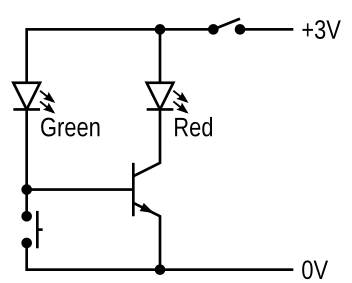
The LED modules actually have series resistors inside them, so it’s safe to connect them across the battery voltage like that.
With the button switch (bottom left) not pressed, only the red LED is supposed to light. If you press the button switch, the red LED is supposed to go out and the green LED light instead. But this is what happened when Jude tried it:
| Button not pressed | Button pressed |
|---|---|

|  |

|  |
With the button switch unpressed, both LEDs light, albeit the green one more dimly. It seemed to me that this would be expected from the circuit. I explained to Jude about Horowitz and Hill’s Transistor Man inside the transistor (now available on a T-shirt, I see), and that LEDs light when enough current flows through them. With only a small bit of prompting, she suggested this modification:
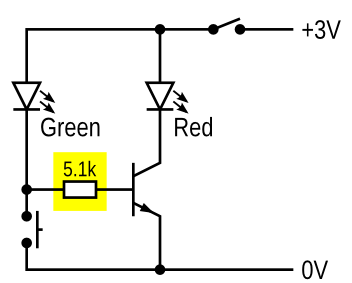
We poppered the resistor into the circuit:
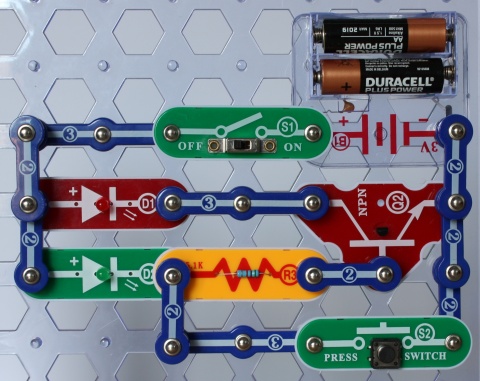
and admired the new behaviour:
| Button not pressed | Button pressed |
|---|---|

|  |

|  |
Success!
Update: Discussion with John Adams
I emailed a summary of the above to John Adams, the makers of the kit, and was pleased to receive a proper and prompt response, which I was given permission to post here:
Our Product Designers recently found that there was an issue with Experiment 82 and I attach an image of the redesign of this experiment.
I have passed your comments onto the team for them to review this experiment again with a view to amending this experiment.
Thank you for bringing this to our attention.
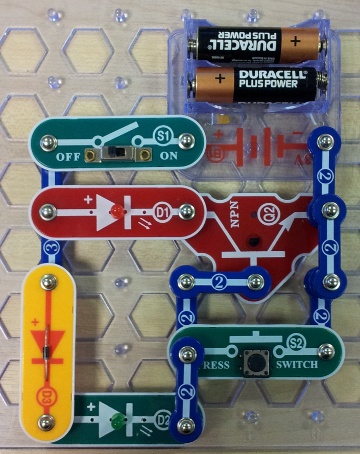
Their redesigned circuit puts a diode in series with the green LED:
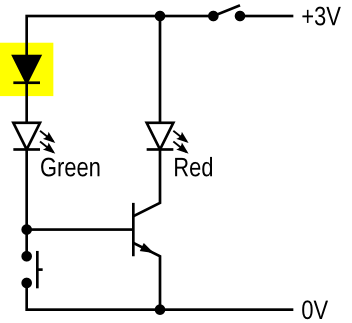
I haven’t actually had the chance to construct this circuit, but hope to do so at some stage and update this again with my findings.